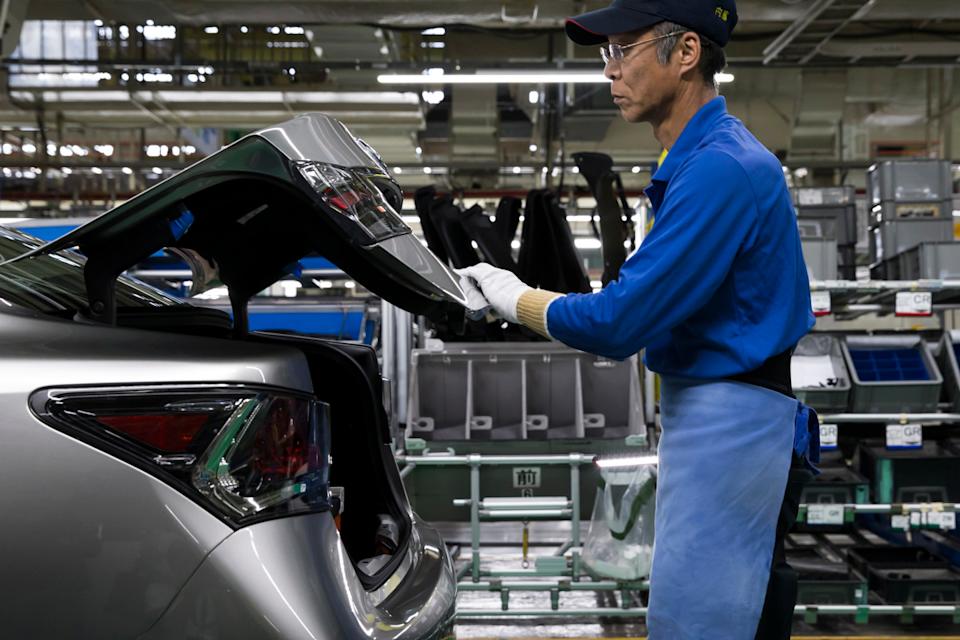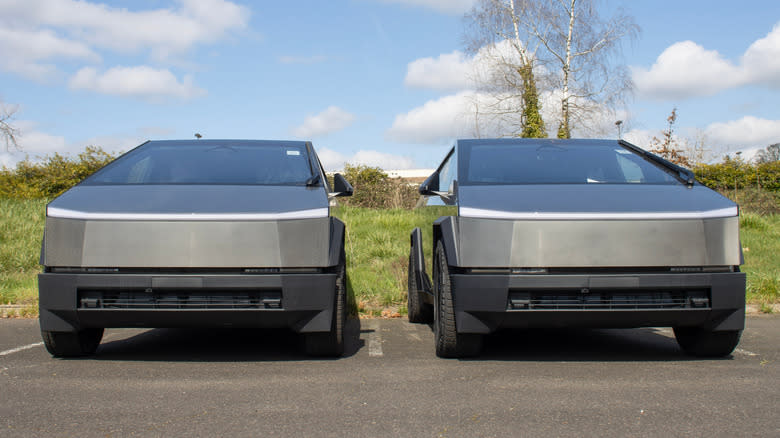Toyota Posts Double-Digit Losses as Tariffs Impact Its Bottom Line originally appeared on Autoblog.
Toyota just took a major hit due to tariffs
In an announcement on August 7, Tokyo time, Japanese auto giant Toyota said that it expects to lose 1.4 trillion yen (~$9.5 billion) from its operating profit by the end of its 2025-2026 fiscal year due to the Trump administration’s hefty tariffs on cars imported to the U.S., which is driving up costs and eating into Toyota’s earnings.
At the same time, Toyota lowered its full-year net profit forecast by 14%, bringing it down to 2.6 trillion yen (~$17.65 billion). This is a sharp drop from its original estimates, which only accounted for tariffs during April and May, which cost it 180 billion yen (~$1.2 billion).
The pain and the money leaving the Toyota City-based automaker’s coffers are already showing. During its first fiscal quarter from April to June 2025, Toyota posted a net profit of 841 billion yen (~$5.7 billion), a staggering loss of 36.9% compared to the same period last year. This sharp decline reflects not only the U.S. tariff, which jumped from 2.5% to 27.5% in April, but also the effects of a stronger yen-to-dollar exchange rate.

Despite this setback, some relief is on the horizon thanks to a trade deal between the Trump administration and the Japanese government. Last month, they agreed to reduce tariffs on Japanese cars by 15%. Toyota believes this new rate could help mitigate the impact, but the damage has already been done.
"[The U.S. tariff] has risen to 15% from the previous 2.5%, which obviously has a significant impact," Takanori Azuma, chief officer in the accounting group at Toyota, said during a news conference on August 7. "And it is a thing we are not able to control. The major challenge is to ensure that our North America business generates solid profits. The result [of a trade deal] remains tough."
Part of that process is a few strategic adjustments. Already, in June, it announced it would raise prices for U.S.-market vehicles by an average of $270 on Toyotas produced from July 1, with further hikes possible if the market allows, according to Azuma. Additionally, Toyota’s head accountant noted that the company would utilize excess production capacity, adding that it aims to “refine our operations by considering every possible scenario."
Azuma emphasized that Toyota is also working to reduce its reliance on the U.S. market, which still accounts for about 33% of its global vehicle sales. "Our [revenue] balance that different regions can cover each other when America catches a cold, is finally coming into place," he said.

Tariffs are not the only problem Toyota is facing
Tariffs aren’t Toyota’s only headache. Currently, fluctuations in the Yen-Dollar exchange rate are expected to cost the company another 725 billion yen (~$4.9 billion). Additionally, the rising cost of materials is expected to reduce profits by an additional 300 billion yen (~$2 billion). Combined, these have caused Toyota to lower its projected full-year earnings by 44.2%.
Despite the challenge, Toyota remains focused on achieving its sales target of 48.5 trillion yen (~$328.98 billion) in net sales revenue by the end of March 2026. In the April-June quarter, Toyota's sales revenue increased by 3.5%, reaching 12 trillion yen (~$81.38 billion), while its operating profit declined by 10.9% to 1.1 trillion yen (~$7.45 billion). The tariffs alone reduced operating profit by 450 billion yen (~$3.05 billion) during the fiscal quarter.

Toyota’s sales are still strong. Global vehicle sales rose 7% to 2.4 million units in its fiscal first quarter, with North America seeing a 12.7% boost and Japan increasing by 11.4%. Surprisingly, Toyota even shipped more cars from Japan to the U.S. after the 25% tariffs on imported vehicles were introduced in April. Toyota’s exports in May rose by 22.9% year-over-year to 41,573 vehicles, and June saw a 15.9% jump to 52,745 units.
Looking ahead, Toyota announced it will build a new plant in its hometown of Toyota City, with operations expected to begin in the early 2030s. Details are scarce for now, but Azuma clarified that Japan is its home and Toyota City is its home base.
"Our top priority is to maintain the production base of 3 million vehicles in Japan," Azuma said. "This is the foundation of Toyota's business, enabling us to expand manufacturing and development in each region. We want to work together to protect it, including through measures to stimulate domestic demand."
Final Thoughts
Toyota isn’t alone in facing these tariff troubles. This week, Honda revealed that its first-quarter earnings fell to ¥244.1 billion (~$1.69 billion) from ¥484.7 billion (~$3.35 billion), on account of tariffs and its own internal struggles with EVs. Meanwhile, Mazda lost ¥46 billion due to its reliance on imports in the U.S. market. Both companies are now looking to shift more production to the U.S. and are rethinking their export strategies.
Ultimately, Toyota and other Japanese automakers face challenges playing ball in their largest market, the United States. However, as time progresses under these conditions, it would not be far-fetched to see automakers drastically change themselves and/or their U.S.-market lineups within the near future.
Toyota Posts Double-Digit Losses as Tariffs Impact Its Bottom Line first appeared on Autoblog on Aug 7, 2025
This story was originally reported by Autoblog on Aug 7, 2025, where it first appeared.








Comments